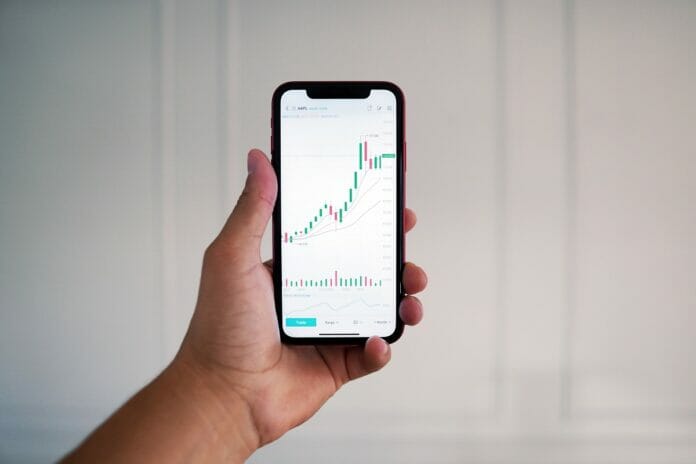Round lots have long served as the backbone of equity trading, but their significance extends far beyond standardized transaction sizes. From influencing liquidity pools to shaping high-frequency strategies, these neat hundred-share increments offer traders a crucial anchoring point in volatile markets.
As regulatory shifts and technological innovations redefine lot structures, understanding the effect of round lots on trading volume becomes key to unlocking market efficiency and performance. Round lots often impact trading volume trends in unique ways. https://thorenext.com/ helps traders access firms that offer in-depth analysis and educational expertise.
How Standardized Lots Create Liquidity Pools?
Standardized lots, often defined as a set number of shares—commonly 100 in equity markets—serve as the bedrock for generating substantial liquidity pools. By establishing a uniform unit of trading, they simplify the matching process between buyers and sellers, as all market participants have a common reference point for their orders.
This uniformity reduces fragmentation and fosters more efficient price discovery, since traders can gauge the demand and supply dynamics more accurately. When a transaction is quoted in round lots, it is more likely to attract counterparties who are comfortable executing trades at these commonly accepted increments, thereby amplifying trading activity around these standardized sizes.
Moreover, standardized lot structures encourage the aggregation of smaller individual orders into larger ones that meet the conventional threshold. This results in higher trading volumes centered around lot multiples, creating dense “liquidity clusters” at predictable intervals.
For institutional investors who handle large volumes, the presence of such liquidity pools is critical. They can enter or exit positions with minimal market impact, thus ensuring that prices remain stable rather than experiencing erratic fluctuations caused by sporadic, smaller orders.
Identifying Volume Spikes Tied to Specific Lot Thresholds
Identifying volume spikes associated with particular lot thresholds involves a careful examination of trade execution patterns and the distribution of orders placed at round lot sizes.
These spikes often become evident when large numbers of traders converge on specific increments—such as 100, 500, or 1,000 shares—because these thresholds align with long-standing market norms or institutional requirements.
When market participants recognize that certain sizes will attract deeper liquidity, they gravitate toward them, collectively boosting trading volume at these pivotal points.
Technological advancements and algorithmic trading have made it easier to detect and capitalize on these spikes. Automated systems continuously scan order books, searching for recognizable patterns of liquidity concentration and then execute trades accordingly.
By doing so, they exploit price continuity and reduced spreads at these lot thresholds. Additionally, institutional brokers often break down large orders into multiple smaller round lots rather than placing a single, sizable trade.
This tactic both mitigates the risk of moving prices unfavorably and ensures that each slice of the trade benefits from the liquidity inherent at each commonly traded increment.
The concentration of trades around these thresholds can also signal market sentiment. If traders flock to certain round lot sizes during periods of heightened volatility, it may indicate strong confidence—or caution—about the direction of a particular security.
Analysts who scrutinize these volume spikes can glean insights into trading momentum and investor psychology. Ultimately, understanding where and why volume spikes occur aids both active traders and long-term investors in timing trades and managing market risk effectively.
The Interplay of Order Flow, Market Depth, and Round Lot Demand
The dynamic among order flow, market depth, and round lot demand is a critical factor in understanding how trading volume accumulates. Order flow refers to the buying and selling pressure that manifests in the market at any given time.
When significant order flow converges on round lots, the depth of the market at those price levels increases, creating thicker “layers” of buy and sell orders. This depth, in turn, provides a buffer against sharp price movements, as it takes a larger transaction to exhaust the available liquidity at those levels.
On the flip side, market depth can prompt traders to favor round lots when placing orders.
Deep liquidity pools in these increments mean fewer concerns about partial fills or large spreads that could adversely affect execution prices. Consequently, a virtuous cycle emerges: as more traders opt for round lots, the order book thickens around those price points, drawing even more participants who recognize the ease and stability of transacting there.
In many cases, algorithmic traders are acutely aware of where the deepest liquidity resides and will target those levels to quickly enter or exit positions. High-frequency trading (HFT) firms, for instance, thrive on minute price discrepancies and rely on the consistency of round lot demand to execute millions of trades seamlessly.
Because these algorithms constantly update based on real-time data, they effectively reinforce the prevalence of round lots, intensifying the market’s focus on these transaction sizes. By appreciating the interplay among order flow, market depth, and round lot preference, traders and investors can position themselves advantageously in the ever-evolving marketplace.
Conclusion
Round lots play an understated yet vital role in shaping the dynamics of trading volume. Their standardized nature fosters liquidity, reduces friction for both retail and institutional investors, and influences algorithmic execution strategies.
As trading technologies evolve and fractional ownership grows in popularity, the significance of round lots continues to shift. By recognizing their impact, market participants can adapt and capitalize on the enduring allure of neatly packaged trading increments.







